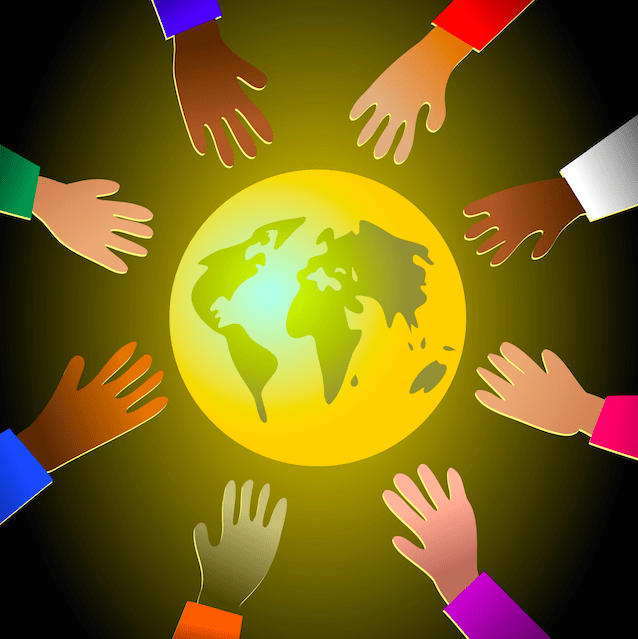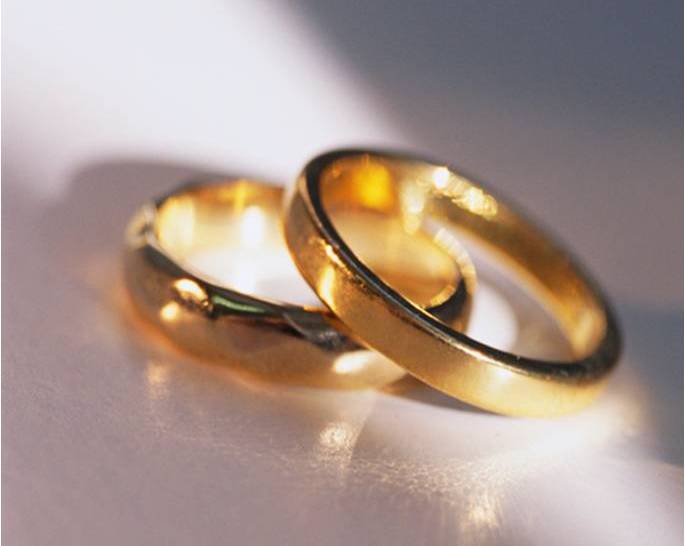
Five years ago I visited a project of the Livingstonia Synod AIDS Program (LISAP) in northeastern Malawi. Here I met a 12-year-old girl who had recently been freed from a forced marriage she had been in for 4 years. Divorced at 12 – it boggled my mind and broke my heart. After meeting a community of people who are now working to get the girls out of these marriages by peer pressure and support, I met another young girl, we’ll call Dalitso, and her father. She was about 12 years old. Her father would not permit her to leave her marriage to an older man. How did she feel? What was her life like in her husband’s home? Did she want to stay or leave? These questions remain unanswered. So I dedicate this article to Dalitso, in hopes that by working together we the church, the community, the government, and non-governmental organizations will be able to make a difference for girls at risk of early marriage.
*****
I’ve spoken recently with many women leaders with whom I work in Africa about issues of abuse of women. One of their consistent first responses has been: “Child marriage is a form of abuse.” In this article we will look at what child marriage, is, its causes, and its impact on adolescent and pre-adolescent girls.
So what is child marriage? According to UNICEF, it is defined as “a formal marriage or informal union before the age of 18…a reality for both boys and girls, although girls are disproportionately the most affected.” For the purpose of this article, and in the context of this issue, we will focus on the girls.
Reasons for Child Marriage
Culture/Tradition: At the outset, it is important to say that underscoring all the reasons discussed below is that fact that the culture within which the girl and her family live implicitly or explicitly approves of early marriage. If this were not the case, there would be pressure from the community itself for child marriages not to take place.

In some cultures, girls are raised to be wives. Hence it is with starry-eyed expectation that a girl looks forward to her marriage and anticipates being married as soon as possible, generally in her mid-to-late teens. These girls are raised with the message that getting married is more important than completing their education, which leads to many girls dropping out of school to get married at a young age.
It is important in many places, both for the reputation of the girl and the status of the family, that a girl is a virgin when she is married. In order to ensure this, parents will marry off their daughters as soon as they reach puberty. Virginity is also important in negotiating the dowry. A girl who is a virgin can bring in a higher price than one who either is or is perceived not to be a virgin.
In a few cultures, in order to ensure that a girl remains a virgin, she undergoes female genital mutilation (FGM) (definition pg. 6-7). FGM is a critical issue to which I cannot do justice in this article. Suffice it to say that in some areas it is directly related to early marriage. Girls will be cut a few months before marriage, and if not, the husband’s family may in some instances initiate the cutting.
___________________________________________
Many cultures in which child marriages take place are patriarchal cultures in which the girl child has little intrinsic value.
___________________________________________
When I started writing this article, I spoke with African friends about the subject of child marriage. As they went around the circle remembering how old they had been when they were married one young man, Gambi, sheepishly responded that he was 15 years old. I was surprised by this, but his friends laughed and said, “Ask him how old his oldest child is.” It turns out the mother of his child, who became his wife when the families found out about the pregnancy, was 14 at the time. A pregnancy before marriage is considered a disgrace not only for the girl herself but also for her entire family. The only redemption for the situation is for the couple to be married.
Poverty: Many cultures in which child marriages take place are patriarchal cultures in which the girl child has little intrinsic value. First and foremost, this is because she is a girl. Second, as a girl, any value ‘added’ such as education or skills training will benefit her husband’s family when she grows up rather than her family. Thus, for her family of origin, education is not deemed important for her. Furthermore, if the family is in dire economic need, one way of gaining income is by marrying the daughter and acquiring her dowry.
L etila was a happy, 13-year-old girl who loved going to school. Her older brother wanted to get married, but the family could not afford to provide a dowry for him to give his prospective wife’s family. Letila’s father decided the way to solve this dilemma was to marry Letila off so that her brother could use the dowry money gained from her marriage for his own. Letila was very unhappy, as she did not want to get married. However, in Letila’s culture, her father’s decision was final, and she was soon married to an older man.
etila was a happy, 13-year-old girl who loved going to school. Her older brother wanted to get married, but the family could not afford to provide a dowry for him to give his prospective wife’s family. Letila’s father decided the way to solve this dilemma was to marry Letila off so that her brother could use the dowry money gained from her marriage for his own. Letila was very unhappy, as she did not want to get married. However, in Letila’s culture, her father’s decision was final, and she was soon married to an older man.
Letila was so unhappy that a few months later she ran away from her husband and came home. However, because the dowry had been paid and thus she ‘belonged’ to her husband, her father would not let her stay at home and took her back to her husband’s house. Not long after that, Letila killed herself. Although Letila’s death is an uncommon outcome of child marriages, this story does illustrate the profound feelings of misery and hopelessness such marriages can create for the girls forced into them.
Additionally, a girl can be married off as a means of repaying a debt. If her father cannot repay a loan he has taken out, then one way to clear it is by giving the man his daughter. A girl can also be given to the husband of her older sister if the older sister proves to be infertile or dies in childbirth.
Impacts of Child Marriage
The impact of child marriage on a girl varies from girl to girl, but generally the impact is greater the younger the girl is. That is, a 17-year-old will have more psychosocial resources within her to cope with the situation than a 12-year-old.
 Emotional: When a girl is forced into an early marriage, it is not uncommon that she will not have met the groom-to-be before her wedding day. Often he is significantly older than she is. After the ceremony she is taken to the man’s home, where she is not able to visit her family or friends. In many cultures she is now considered a woman and as such is not permitted to play with girls her own age.
Emotional: When a girl is forced into an early marriage, it is not uncommon that she will not have met the groom-to-be before her wedding day. Often he is significantly older than she is. After the ceremony she is taken to the man’s home, where she is not able to visit her family or friends. In many cultures she is now considered a woman and as such is not permitted to play with girls her own age.
This can lead to many types of trauma. Having her first sexual experience too early and forced on her can have repercussions for the rest of her life. As if the pain of isolation from friends and family is not enough, in some situations she is treated as free labor in the house of her in-laws. Often the groom is significantly older than the bride, creating an even greater power imbalance. Being taken directly from childhood to married life denies a girl her adolescence and time for personal development – the development of a sense of who she is. Her identity goes from being a child to a wife.
Physical: The physical impact of early marriage on a girl is most dangerous when it comes to sexual contact, pregnancy, and delivery. When a girl is first married, it is culturally important for her to get pregnant right away to prove her fertility. No forms of contraception will be used, even if they are available. Additionally, when a girl is not physically mature enough to have intercourse, she in danger of having tears in the vaginal area. This puts her at increased risk of contracting sexually transmitted infections from her husbands, including the risk of becoming infected with HIV/AIDS. Such an early pregnancy prolongs her years of child bearing, which also has consequences for her body.
___________________________________________
Being taken directly from childhood to married life denies a girl her adolescence personal development. Her identity goes from being a child to a wife.
___________________________________________
Pregnancy and childbirth are the leading causes of death for girls age 15-19. Girls in this age range are twice as likely to die during childbirth than women 20 years and older, while girls age 10-14 are 5 to 7 times as likely to die. Because girls age 10 – 15 have pelvises that are too small for giving birth, their rate of obstetric fistula is 88%. Obstetric fistula occurs when the wall between the birth canal and the bladder, or sometimes the rectum, develops a tear and urine or stool leaks out. The smell that develops over time can cause the women to be ostracized by family and society. An obstetric fistula can be surgically repaired, but many of the girls and women who are living with fistula are in rural areas where, even if they had knowledge of the surgery, access to it would be difficult.
 There are also negative physical impacts for children born to mothers under the age of 18. Child mothers face an increased risk of delivering pre-term, low birth-weight babies. The infant mortality rate is 60% higher when the mother is under 18 than when she is over 19. Children are also more likely to die before their fifth birthday if their mother is under 18.
There are also negative physical impacts for children born to mothers under the age of 18. Child mothers face an increased risk of delivering pre-term, low birth-weight babies. The infant mortality rate is 60% higher when the mother is under 18 than when she is over 19. Children are also more likely to die before their fifth birthday if their mother is under 18.
Many girls married as children also face physical violence in their marriages. Because of their cultural powerlessness in their situation, the only option is often to endure.
Economic: Poverty can be both a cause and an effect of child marriage. The ‘causes’ are discussed above. The ‘effects’, however, are that a young girl is taken from her home before she has finished school, without any skills for supporting herself, making her entirely dependant on her husband. This can lead to a vicious cycle in which the girl does not have the capacity to support herself or her children and give them the needed guidance to seek better futures for themselves.
Responses
As can be seen above, child marriage has very little to recommend it from the perspective of the well-being of the girl and can, in fact, be very dangerous. The best situation is for girls to stay out of a marriage/union until they are legally and emotionally old enough to choose their own partners. A study by the International Center for Research on Women has found five strategies that work. These are to “Empower girls with information, skills and support networks; Provide economic support and incentives to girls and their families; Educate and rally parents and community members; Enhance girls access to high-quality education; and Encourage supportive laws and policies.”
Keeping a girl in school is critically important for many aspects of her life both as a child and as an adult. If a girl stays in school until she finishes high school, not only will it improve her well-being and that of her future family, but it will give her an opportunity to grow up and develop a sense of self, while keeping her unmarried until she is old enough to make good decisions on marriage.

Photo Credit: Janet Guyer
At the same time, care must be given to girls who are already in child marriages. In Gambela, western Ethiopia, a Presbyterian partner church is running a fistula project, educating women and communities about fistula and encouraging any woman who thinks she is suffering from one to come identify herself and seek treatment. There is a fistula hospital about a 3-hour drive from the church, where the women can receive corrective surgery. Not only does such a surgery make the woman more comfortable, but it also allows her to return to the activities of her community and family.
The good news is that rates of child marriage are starting to go down. The bad news is that 15 million girls each year are still getting married before their 18th birthday. That comes down to 41,000 girls a day, or 28 girls each minute. The task looms large, and the church must be at the forefront of the struggle, saying this is not ok for God’s children.
*****
AUTHOR BIO: Rev. Janet Guyer is a mission co-worker of the PC(USA) in Africa, where she serves as the Facilitator for Women’s and Children’s Interests. She has served the church for over two decades, over 12 of which she has spent living in Africa, accompanying partners as they strive to address the marginalization of women and children in their communities. Janet currently lives in Malawi, and she was previously based out of the Republic of South Africa.
Read more articles from this issue, “Hearing the Voices of Peoples Long Silenced”: Gender Justice 2014!






Unbound Social